First: thanks for asking. Seriously. Click through to read my answer.
Continue readingGlasgow Worldcon 2024: Schedule and Information
I will be at Glasgow Worldcon and am happy to say hello and sign books any time!
Scheduled appearances:
Thursday, August 8:
Epic Appeal (panel), 4:00 PM (GMT+1), Forth (Armadillo Bldg).
(panel description below
Friday, August 9:
I’ll be joining the Glasgow Pop-Up Social
2:30 – 3:30 pm (Friday)(maybe Saturday too) in Hall 4, open seating area
Note: The Pop-Up Social runs Thursday, Friday, Saturday from 2 – 4 pm Hall 4, open seating area. Lots of different authors! Chat, hang, get books signed
Saturday, August 10: (two signings!):
“Official” Autographing: 10:00 AM (GMT+1), Hall 4 (Autographs)
I will have bookplates and bookmarks, so come and get something signed with or without books.
Signing: Dealers’ Room Tachyon Pub Table: 3:00 PM, with Ellen Datlow and Carrie Vaughn.
Sunday, August 11:
Table Talk: 4:00 PM (GMT+1), Hall 4 (Table Talks)
(you have to sign up for this, as there is limited seating! Please sign up! Also, I have had wait-listed people get in on the day, because of no-shows or cancellations and in one case because I told them to join us anyway because I was in Australia and when else would they be able to see me?)
Read this! ==>
I am excited to announce I will have with me six print ARCs of THE HISTORY OF THE WORLD BEGINS IN ICE: Stories and Essays from the World of Cold Magic.
I’ll be giving one away at the Table Talk. Reviewers who would like an early copy, please track me down, and ask. I hope these ARCs can go to good homes that can help spread the word, given this is a small press collection. Thanks!
I will also have two print (test, not final) copies of the chapbook short story (Cold Fire chapter 31.5 “bonus chapter”), THE BED HE HAD BUILT FOR HER, with a lovely cover illustration by Allaine B Leoncio and an interior illustration by Jody Lee. At the moment, the chapbook is available only with a pre-order of the Deluxe hardcover special edition of the collection, so if you would love an early copy, be the first to come up to me at a convenient moment at Worldcon and ask (my strong preference is that both of these go to Cold Magic fans, not to collectors).
#
Epic Appeal, panel description and info (this panel should be fun!):
Epic fantasy stories usually encompass multiple volumes and thousands upon thousands of pages. What is the appeal of the epic novel? Is it the multi-act storylines, the interwoven structure, the intricate details, the big cast of characters? Or the fact that you can use them as a weapon? Or all of the above? Come along to find out just what makes an epic novel deeply satisfying for readers and writers alike.(panel with Andrea Stewart,
Participants: Marve Michael Anson (m), Andrea Stewart, Kate Elliott, M H Ayinde, Tao Wong
I attend conventions for two reasons: to meet my readers, and to hang out with my friends. I hope to see you there!
THE HISTORY OF THE WORLD BEGINS IN ICE: Preorders are LIVE
Preorders for THE HISTORY OF THE WORLD BEGINS IN ICE: Stories and Essays from the World of Cold Magic are now available. Publication date: October 2024. Exactly what it says in the title: a collection of eleven standalone short stories and eleven essays, plus illustrations, all the stories set in the Cold Magic universe.
Feast your eyes on the Tom Canty cover:

Two print editions are available for preorder: the Deluxe hardcover limited edition ($50) and the regular trade paperback edition ($20). For the time being, the Deluxe limited edition hardcover will only be available for preorder on the Fairwood Press website.
• The limited edition is VERY limited; there will only be 200 hardcover copies
• I have numbered and signed them all on a lovely signature page
• The Deluxe edition includes a color fold-out of Julie Dillon’s “dragon rising from the sea of smoke”
• AND a special secret chapbook (with a lovely cover and a sweet interior illustration) comes with every limited edition order
For more information on the Deluxe edition, or to place a preorder, click through to the order page.
#
I conceived of this project in 2018 with the idea that I could publish a Spiritwalker-themed short fiction collection in Fall 2020 to coincide with the 10th anniversary of the initial publication of COLD MAGIC. From the beginning, I wanted to add more illustrations, in large part because I so love the illustrations Julie Dillon drew for a very limited edition 2013 chapbook, The Secret Journal of Beatrice Hassi Barahal (included in the new collection!).
When R.B. Lemberg published GEOMETRIES OF BELONGING: Stories and Poems from the Birdverse with Fairwood Press, I realized that maybe I had found the press who would be interested. I asked Patrick Swenson, the publisher, if he would consider publishing another “universe” themed collection—and he was enthusiastic!
Patrick has been absolutely great to work with. I’m in awe of his multi-tasking skills. He’s the reason the collection has a great Tom Canty cover which I am completely bowled over by.
I contacted a number of artists who I was hoping to work with for interior illustrations, and almost all of them said Yes! despite overloaded schedules. I can’t praise them enough, all of whom came through with splendid art that enhances the text.
THE HISTORY OF THE WORLD BEGINS IN ICE has been a labor of love from start to finish, my tribute to the readers who have loved the COLD MAGIC and the Spiritwalker Trilogy, to the beauty and power of art when it works in concert with text, and to myself and my stubborn commitment to writing the strange stories that keep bubbling up in my mind. My natural narrative length is probably the trilogy, and yet I wrote the short fiction contained herein (as well as the essays) with just as much love and concern for craft and outcome as my longest and most detailed epic tome.
Two of the stories are original to the collection, while the others have appeared in one venue or another, although not all officially published (a few were posted online). You don’t have to have read the Spiritwalker Trilogy to follow the stories; many were written for venues where I had to assume readers wouldn’t have read COLD MAGIC and sequels.
I can’t get over how gorgeous the Tom Canty cover is, and I can’t wait for you all to see the illustrations inside, too
A quick note about preorders: Fairwood Press is a small press run by a single person (Patrick) who takes a chance on every book he publishes. Preorders go directly to pay for expenses ahead of publication, so they are a huge help similar to how Kickstarter pledges are a big help. Preorders are also a way to support small presses, who are often the only places willing to take a chance on a niche project like this one.
The site is now ALSO kateelliott.com (welcome!)
The kateelliott.com URL now redirects to this site (I Make Up Worlds).*
I have not yet transferred any information over to this site yet from the kateelliott.com archive, but some of that should happen toward the end of this year.
Meanwhile, if this is your first time here, this was once an active blog and is now more of an inactive blog. This site currently features a bare-bones bibliography, links to my newsletter and patreon (where I post weekly), and numerous EXTRAS (see menu item), as well as the all important “Where Do I Start With Your Novels (boy band style)” pinned post.
If there is any information you would specifically like to see included or added here, or any questions answered in the blog, please let me know in the comments to this post (or just say hi!), and I’ll see what I can do.
For the most up to date news and specifically for time-dependent news about things like ebook sales or online or in person appearances, subscribe to my newsletter. It’s currently on Buttondown, free (no paid content).
Thank you. As always, I could not do this without you.
2023 Update: The Keeper’s Six, Servant Mage, and Furious Heaven
Contemporary fantasy The Keeper’s Six drops on January 17, 2023. This very short standalone novel opens in Hawaii and quickly moves into a complex multiverse when Esther discovers her adult son has been kidnapped by a dragon boss and she calls in her old gang to help her get him back. Cover by Emmanuel Shui.
In a starred review, Publishers Weekly says, “Treacherous terrain and even more treacherous trading partners ramp up the stakes of this masterful contemporary fantasy from Elliott.”
Last January, 2022, a secondary world standalone fantasy novella Servant Mage was published. Fellian is an indentured servant after the revolution. When a small party of rebels offers her freedom in exchange for helping them, she must decide if the cost is worth it and who she trusts. Cover by Tommy Arnold.
“An absolute gem of a story… I loved it.” —S. A. Chakraborty
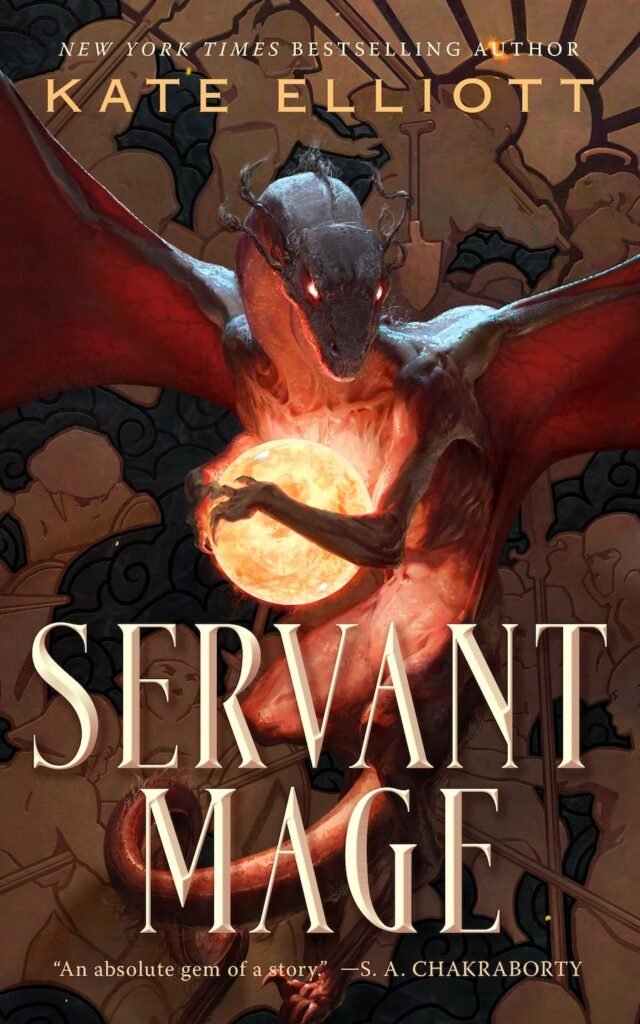
Furious Heaven, the sequel to Unconquerable Sun, finally arrives in March (UK) and April (USA). USA cover by Chris McGrath. UK cover by Ronnie Tegnemaskin.
Very excited for all of you to read this unstoppable dreadnought of a novel, which in a starred review Library Journal calls “Expansive space opera at its finest.”
USA (Tor Books) cover:
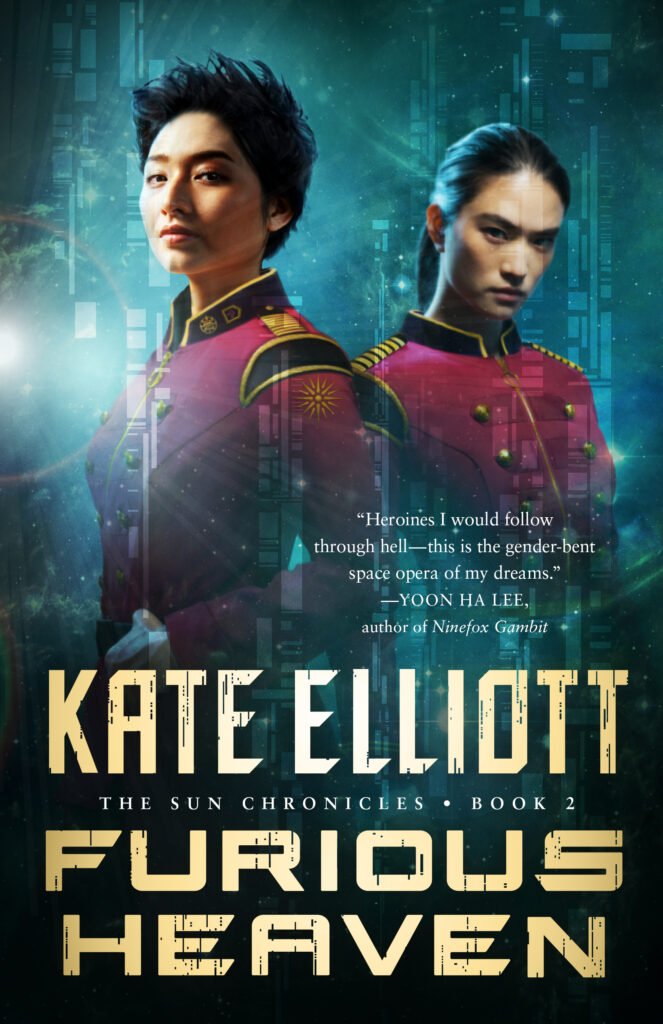
UK/Commonwealth (Head of Zeus) cover:

This year I hope to update my web page and this blog, but for now I wanted to get all my recent and forthcoming releases in a row.
Kurosawa Watch: The Most Beautiful (1944)
Kurosawa Watch: The Most Beautiful (1944)
Akira Kurosawa’s second film 一番美しく Ichiban utsukushiku is generally translated into English as The Most Beautiful.
The film is an example of home front war propaganda. It tells the story of a group of women factory workers, although I believe they are mostly meant to be adolescents since they are occasionally referred to as children and they are indeed very young. They work at an optics factory making lenses for the military.
The film opens as the factory director, played by Takashi Shimura (who also appeared in Kurosawa’s first film), speaks to the factory workers over a public address system to tell them that their production targets are being increased by 100% for the men and 50% for the women.
As the camera slowly moves along the floor where the women are working we see women breaking from their work to talk to each other. I felt Kurosawa playing with the expectation that women are gossips and talkers, unable to buckle down and resentful that they are being asked to do more work, because I expected what came next: The women are in fact angry; they’re angry they are only being asked to increase their production by 50%. The head worker of their unit, played by Yoko Yaguchi, goes to the factory managers and tells them (with a great deal of apology and humility) that the women want to aim for a higher increase. Of course, she says, they can’t manage a 100% increase like the men but they want to try for a 2/3rds increase.
The rest of the film follows these mostly very young women as they struggle through illness, accident, exhaustion, personal conflicts, and family tragedy to keep the production goals.
While this is very much a film driven by propaganda constraints, it offers an unexpected glimpse into the lives of women of that era. I don’t know how much is propaganda and how much is taken from Kurosawa’s actual observations at a factory during the war (I did not research his working methods for the film). It is a given that the film must portray the young women as wanting to serve the cause nobly and with their greatest efforts.
At first they meet their targets. Then obstacles arise. One young woman gets ill and begs the dorm mother (played in a lovely, warm performance by Takako Irie) not to tell her parents because they will come and take her home, which indeed her father (a farmer) does, leaving their group one short. Another woman falls from the roof while laying out bedding to air dry; she returns to the factory with a cast on her foot as soon as she can. Stress from the pace of work brings quarrels eventually solved with everyone blaming themselves and asking for forgiveness.
One of my favorite elements of the story is that the group is also trained as a fife and drum corps. They play for parades and festival days. They march to and from the factory each day (leaving and returning to their dormitory) either singing or marching. Early in the film they sing a song about the Mongol invasion of Japan which famously ended in total defeat and disaster for the Mongol fleet.
As always, Kurosawa’s framing of scenes is matchless. People and structures are always arranged in pleasing configurations with camera angles to match. It’s fascinating to me to see how good he was at this from the get go, although he had been working in the industry for some time before he started directing so presumably he had developed the basics of an artistic philosophy before his first film.
The Most Beautiful is a complete film with a full narrative architecture (even within the propaganda limits) so it isn’t quite fair to compare it to Sanshiro Sugata, which lacks some 17 minutes of film and is choppier in terms of plot. But with the second film I already feel I am in the hands of a director who knows exactly he wants and can bring it to life on the screen.
A final aside: This film focuses mostly on women (the male characters are all in support roles), and it is mostly women’s faces and women’s interactions with each other that we see. I loved this aspect of the film especially because I already I know most of Kurosawa’s films focus on men, even those that include one or two important female characters.
Takako Irie, who plays the dorm mother, was a big star in Japan who had her own production company. She plays a warm and compassionate “mother figure” who deeply cares for her charges. There’s a brief and affecting moment where we realize she is a widow and that her husband has died fighting in the war, and it’s interesting how this is lightly touched on because it doesn’t need to be hammered in. Everyone watching this was affected by the ongoing war in a way those of us watching it from this distance can’t measure.
The other main female character is Tsuru Watanabe, the leader of the women workers, played by Yoko Yaguchi with marvelous clarity and determination. She married Kurosawa after this film. I know nothing about her except what I read on Wikipedia which includes this fascinating tidbit: states that “while working on [The Most Beautiful] Yaguchi clashed over the alleged ways the director treated the actors.” She seems to have retired from acting after marriage.
What a lovely and interesting film which would be even more interesting for those who have a better grasp of the specific context in which it was made. Recommended!
Next up: Sanshiro Sugata, Part Two (1945). Yes, indeed, Hollywood did not invent the sequel all by itself.
Kurosawa Watch: Sanshiro Sugata (1943)
SANSHIRO SUGATA is Akira Kurosawa’s debut film as director, first shown in 1943. He also wrote the screenplay based on a novel by Tsuneo Tomita.
The story is set in the late 1800s and follows a young man (Sanshiro Sugata, played by Susumu Fujita) seeking to find a martial arts teacher. He arrives in town to study jujitsu, but after witnessing an altercation between a jiujitsu master and his students and a single judo master, Yano, he asks to study with Yano.
The primary conflict in the film is Sugata against his own lack of self control and his reliance on strength rather than training. He has to learn to control himself in order to master martial arts and become Yano’s leading student. After Yano’s expels him for fighting in the street, Sugata plunges himself into a cold lake overnight, and in the morning the sun’s light falls upon a blooming lotus flower as a symbol of his ability to master himself.
There are two intertwined secondary conflicts. The town’s police department wants to hire one of the local martial arts schools to train its officers. Matches are set up to determine which school is best. In one match Sugata so overpoweringly throws his opponent (the unsympathetic jujitsu master seen in the opening sequence) that the fall kills the other man.
The final match will pit Sugata against the respected master Murai. This match gains additional tension when Sugata meets Murai’s daughter Sayo because one of her geta (wooden shoes) breaks on a steep stairway leading up to the temple where she prays regularly. A series of short scenes makes it clear the two are attracted to each other (although never that crudely stated) even if Sugata doesn’t quite know how to understand or express such a feeling. By the way, Sayo is a lovely character. Yukiko Todoroki is wonderful in the role. Her charisma lights the screen in what is a fairly small role in terms of screen time. She got her start in show business in the Takarazuka Revue.
As the match between Sugata and Murai begins, the viewer knows how strong Sugata is, and doesn’t want him to harm Murai. At the same time, Sugata has to win in order to gain the police training contract for his master. In the end Murai is thrown three times before he concedes, and afterward Sugata goes to his home to make sure he is recovering.
As this secondary plot line unfolds a mysterious man arrives to challenge Yano’s students, specifically Sugata. This man, Higaki, is also clearly interested in Sayo Murai. After Sugata’s victory, Higaki makes a final demand for a match to the death.
This match plays out in a wind-torn field of tall grass in a striking and dramatic manner that to my mind absolutely presages the rest of Kurosawa’s career and how he uses nature as a way of understanding human emotion and conflict and the human presence in the natural world. It’s a phenomenal scene, filled with energy and foreboding.
#
What we can now watch is not the entire film Kurosawa made. Wartime censors cut out 17 minutes, which have never been recovered although the full script is extant. I don’t know what precisely was removed but there were certainly some leaps between scenes where it felt as if interactions were missing, perhaps particularly with Sayo’s plot line. Someone who has read the script would have a better idea.
Some of the lighting feels murky but, again, I don’t know enough about film history to know if this reflects the techniques of the time or the physical aging process of film itself.
Besides the amazing final duel in the windswept field, two other things struck me about this film.
One of the things I love about Kurosawa is how he composes people within the frame of the screen. This is already apparent in this film. People are never haphazardly placed. Empty space isn’t just there, or filled with random background sets. The camera might dwell for 3 seconds on four men on the screen, three seated and one standing, and how they are arranged is art. Seeing this aspect of his work so clearly in his first film was kind of amazing to me.
Kurosawa is might well be best known in the West for his long collaboration with actor Toshiro Mifune. But I could not help but notice that while Mifune is not in this film (and could not have been since he was, I believe in the Japanese army stationed in Manchuria during the war), another longtime Kurosawa actor is: Takashi Shimura. So I checked, and indeed Shimura appeared in 21 of Kurosawa’s 30 films, which makes him the actor Kurosawa worked with most. I was delighted to see him here. He had a long and distinguished career in film from 1934 to 1981. His Wikipedia entry says that during the war he was arrested and held for three weeks due to his prior involvement with left-wing theater groups.
Next up: THE MOST BEAUTIFUL (1944).
Again, I’m using The Criterion Channel to view these early films (subscription required). I’ll write up a post in about two weeks (circa January 24).
Kurosawa Watch Project 2021: a viewalong
Purely for myself I have decided to attempt a chronological watch of Akira Kurosawa’s films.
Over the years I have seen more films by Kurosawa than by any other single director. Seven Samurai is probably the film I have watched the most times of any film (not counting films my children watched over and over again when they were little).
Kurosawa’s ability to compose within the frame and his adeptness at action sequences are two of the many things I love about his work. The rise of streaming access strikes me as a great opportunity to view an artist’s work as it unfolds across decades.
Please join me at any time during the year. My goal is to average 2 Kurosawa films a month. I’ll be posting a non academic commentary on each film as I see it, and I’d love to appreciate and discuss the films with others who have seen them too.
To begin with I will be using the Criterion Channel. Currently it seems to offer all but four of his 30 films. That availability may change, but for the moment it has all the early films which I feel might be hardest to find in other venues.
The first film is Sanshiro Sugata (1943). It’s 80 minutes long and I’ve already watched it. I’ll post my comments next Sunday January 10 on this blog.
Spiritwalker Universe fiction
I will always be grateful to the enthusiastic and devoted readers who have championed my Afro-Celtic post-Roman icepunk regency adventure alternate-history fantasy, with magic both cold and fire, revolution, Phoenician spies, well-dressed men and hungry women, female friendship, a spirit world dangerously intertwined with the mortal world, sword fights and battles and ball games, world trees, the talking heads of decapitated poets, legal niceties, and therefore of course lawyer dinosaurs. Where would we be without lawyer dinosaurs, I ask you?
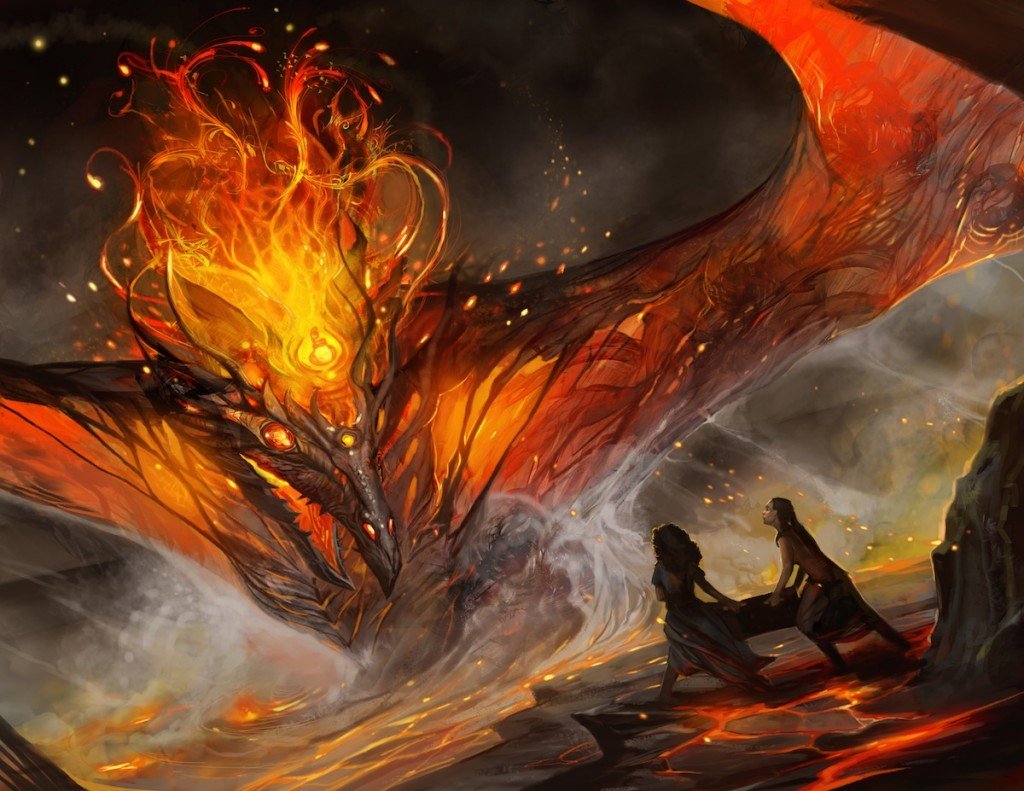
The Spiritwalker Trilogy:
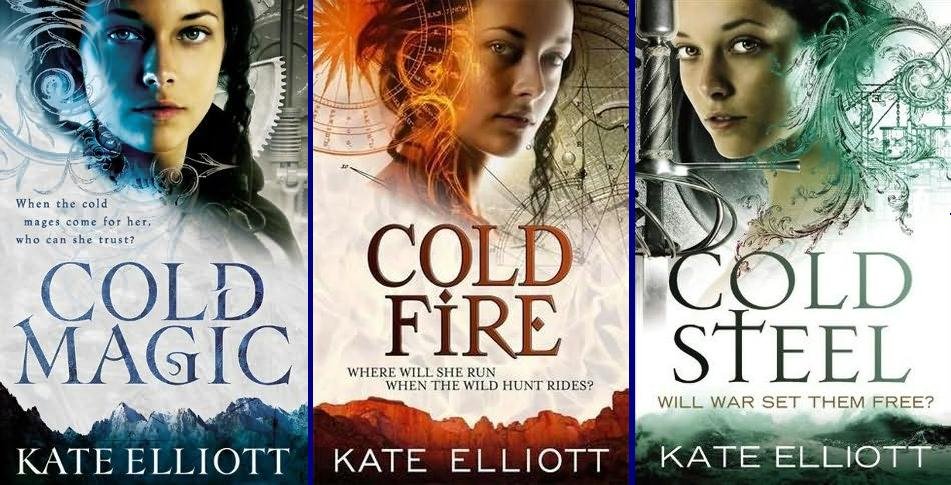
Short Fiction
Bloom is a novelette set in the Spiritwalker universe about eight years before COLD MAGIC. While a few familiar characters appear, it is actually about an entirely different character’s journey through grief. A quiet story that I really love, it is available in THE BOOK OF MAGIC, edited by Gardner Dozois.
A Compendium of Architecture and the Science of Building is a short story set about a year after Bloom and takes place at Four Moons House. The elderly uncle of the mansa who has come home to retire after many years working abroad as architect, but things don’t work out quite as he expects. It appears (free!) in Lightspeed Magazine (includes an audio version).
The Beatriceid is Bee’s retelling in verse of the story of Dido and Aeneas, obviously the more correct version. Set during Cat and Bee’s school days at the Academy, the events take place before COLD MAGIC and as such can be read at any moment, especially if you enjoy the AENEID or like to take the piss out of the Romans, as I do. My apologies because at the moment there is no version of it online. It was originally published by Book Smugglers Publishing. As soon as there is an online version I’ll link here.
To Be A Man (A Roderic Barr Adventure) takes place at the same time as the final chapter of COLD MAGIC. This story has no redeeming social value whatsoever. You’ve been warned. You can read it on this website for free. An audio version is available for purchase (a mere $0.99) at Serial Box.
A print version appears in the collection THE VERY BEST OF KATE ELLIOTT (Tachyon Publications).
Cold Fire Bonus Chapter 31.5 (to be read after chapter 31 of Cold Fire, natch). XXX rated. No, really. I wrote it because N.K. Jemisin made me. If you, dear Reader, do not care for smut (and no reason anyone should), then it is perfectly fine to skip this chapter; the trilogy works fine without it. If you do like smut, here you go.
The Courtship is a coda novelette, to be read after the end of Cold Steel. It wraps up a couple of loose ends (but not all of them). It is available on this website HERE (contains adult situations and nudity).
The Secret Journal of Beatrice Hassi Barahal (with 28 fabulous black and white illustrations by Hugo Award winning artist Julie Dillon) is available at Gumroad as a pdf for $3.50. Discover Bee’s side of the story, with pictures from her sketchbook!
“I Am A Handsome Man,” Said Apollo Crow takes place after the Spiritwalker Trilogy and features an unusual denizen of the spirit world. It is available in THE BOOK OF SWORDS, edited by Gardner Dozois.
A Lesson To You Young Ones is a very short story featuring Maester Godwik, one of my favorite lawyer dinosaurs, and the lesson he teaches a classroom full of young pupils. It is available on this website.
When I Grow Up might best be described as the coda to the coda. Currently available on the mighty Book Smugglers site.
In addition, I have four partially written but as yet unfinished Spiritwalker stories I hope to complete, after which I would like to put together an illustrated Spiritwalker short fiction edition. In truth, I had hoped to create and complete that project for the 10th Anniversary of the publication of COLD MAGIC but life intervened and I didn’t have the energy, so a Spiritwalker collection remains a future goal.
UNCONQUERABLE SUN: Discussion Zone
If you’ve read UNCONQUERABLE SUN and want to discuss any or all aspects of the story and universe, ask questions, or make easter egg guesses, this is the blog place to do so. SPOILERS ALLOWED. SPOILERS BEWARE.
There is also a Discord server for those who prefer that, which you can find at this link.
I’m using both venues because some people don’t use Discord at all or prefer comments on a blog.
To answer one question right up front: I’m working on book two, although with some pandemic delays. The hope and plan is for a Fall 2021 publication date.
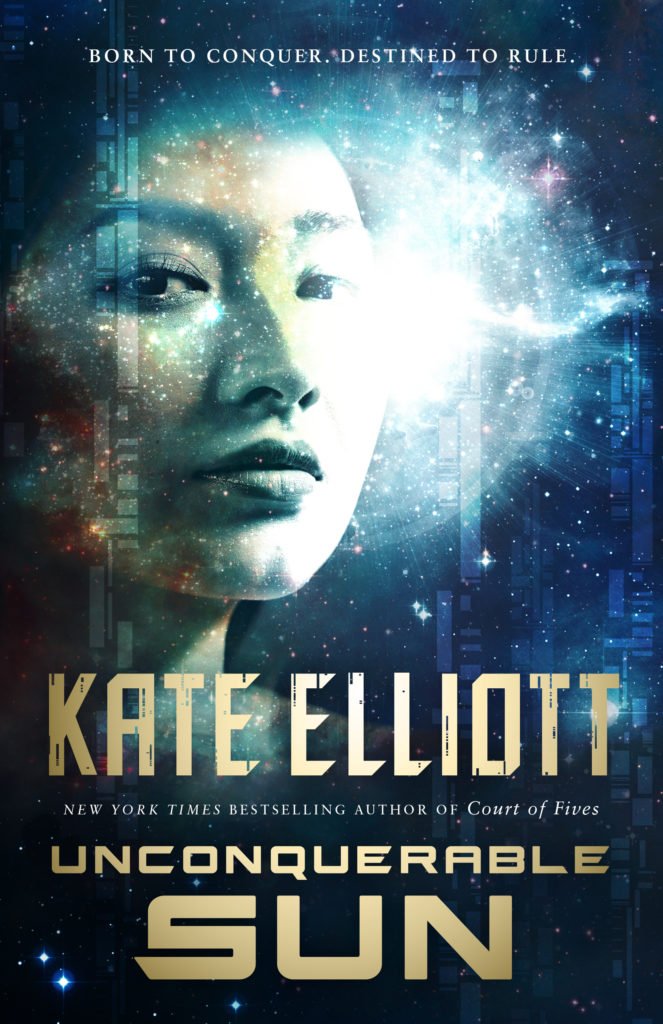
Where to find me online these days: an interim post
After mostly dropping offline and out of this blog for several years, I am readapting my online presence.
You can still most reliably find me online on Twitter at KateElliottSFF. I do have an Instagram account (also KateElliottSFF) although I don’t use it much. I deleted my Facebook account some months ago.
My newsletter is now on Substack, which means News generally shows up on my substack site once a month or so. If you are here looking for news, look there first.
I haven’t decided how to go forward with this particular site in the future; I like the ease of attaching Substack to my newsletter, which is why I went there. I do intend to update my old web site at kateelliott.com but I’m not sure when that will happen. Soon! (I hope.)
UNCONQUERABLE SUN is still scheduled for 7/7/2020. Pre-orders are genuinely helpful for writers, as is library use. Thank you!

cover of Unconquerable Sun

